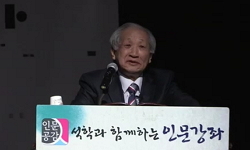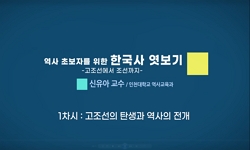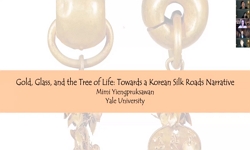This study aimed to examine the changes made in the spatial structure of a local city in Silla according to the change in the local government system. The case study area was the juchi (州治, the governing place of the ‘ju’, a local administrati...
http://chineseinput.net/에서 pinyin(병음)방식으로 중국어를 변환할 수 있습니다.
변환된 중국어를 복사하여 사용하시면 됩니다.
- 中文 을 입력하시려면 zhongwen을 입력하시고 space를누르시면됩니다.
- 北京 을 입력하시려면 beijing을 입력하시고 space를 누르시면 됩니다.
新羅 漢州 州治의 형성과 공간구조 변화 = The Formation and Transition of the Spatial Structure of the Juchi of Hanju, Silla
한글로보기https://www.riss.kr/link?id=A108814031
- 저자
- 발행기관
- 학술지명
- 권호사항
-
발행연도
2023
-
작성언어
-
- 주제어
-
KDC
900
-
자료형태
학술저널
-
수록면
19-73(55쪽)
- 제공처
- 소장기관
-
0
상세조회 -
0
다운로드
부가정보
다국어 초록 (Multilingual Abstract)
Silla first organized the Han River basin by establishing Sinju (新州) in 553. Before Silla’s Middle Ancient period (中古期), Kunju(軍主) was the local governor of ju, and juchi was where an jeong (停, an army unit led by Kunju) was installed. Therefore, juchi had a solid military character and frequent changes were made to cater to specific strategic needs. In the case of Hanju, the first juchi was installed around Iseongsanseong Fortress in Hanam and then was moved to Namcheonju (南川州) around Seolbongsanseong Fortress in Icheon, and then Bukhansanju (北漢山州) around Achasanseong Fortress.
Large-scale fortresses and numerous ancient tombs were built at the juchi. The most important facility was the mountain fortress (山城), which was used for administrative purposes. A settlement also founded to support it. However, during Silla’s Middle Ancient period, due to frequent changes, juchi had not been as a central city of the state. Therefore, no significant difference in the spatial structure between juchi and those local bases such as Yongin and Yeoju can be observed.
After the 7th century, the local administrative system underwent a period of transformation. The location of the juchi came to be fixed and was located at the top of the local administrative district. In addition, in 647, Silla abolished the local hierarchy system known as oewije (外位制) and relocated the citizens living in the capital to local cities such as sogyeong (小京), and juchi. This means that the boundaries between the capital and the provinces became blurred. Following this, juchi grew into local cities along with sogyeong, serving complex function.
Hanju’s juchi was eventually cemented in Hanam and grew into a regional central city. In the early years, the most critical important urban facility within Hanju’s juchi was Iseongsanseong Fortress, where the administrative office was located. In conjunction with installing juchi by changing the local system, the fortress and internal facilities of Iseongsanseong Fortress were expanded and renovated. Residential and religious buildings were located in the Deokpungcheon Stream area on flatland sites, and not inside Iseongsanseong Fortress. In the late 8th century, as Iseongsanseong Fortress declined, the functions that had previously takne place there were removed to the Deokpungcheon Stream area, which was flatland.
This study aimed to examine the changes made in the spatial structure of a local city in Silla according to the change in the local government system. The case study area was the juchi (州治, the governing place of the ‘ju’, a local administrative unit) of Hanju (漢州). The rationale for selecting Hanju was twofold, for its location having been based along Silla’s border for an extended period, and for it having undergone institutional changes for a longer period of time compared to other local cities. For these reasons, Hanju is arguably the most compelling case to examine the various changes that occurred in the urban landscape in association with the local system.
Silla first organized the Han River basin by establishing Sinju (新州) in 553. Before Silla’s Middle Ancient period (中古期), Kunju(軍主) was the local governor of ju, and juchi was where an jeong (停, an army unit led by Kunju) was installed. Therefore, juchi had a solid military character and frequent changes were made to cater to specific strategic needs. In the case of Hanju, the first juchi was installed around Iseongsanseong Fortress in Hanam and then was moved to Namcheonju (南川州) around Seolbongsanseong Fortress in Icheon, and then Bukhansanju (北漢山州) around Achasanseong Fortress.
Large-scale fortresses and numerous ancient tombs were built at the juchi. The most important facility was the mountain fortress (山城), which was used for administrative purposes. A settlement also founded to support it. However, during Silla’s Middle Ancient period, due to frequent changes, juchi had not been as a central city of the state. Therefore, no significant difference in the spatial structure between juchi and those local bases such as Yongin and Yeoju can be observed.
After the 7th century, the local administrative system underwent a period of transformation. The location of the juchi came to be fixed and was located at the top of the local administrative district. In addition, in 647, Silla abolished the local hierarchy system known as oewije (外位制) and relocated the citizens living in the capital to local cities such as sogyeong (小京), and juchi. This means that the boundaries between the capital and the provinces became blurred. Following this, juchi grew into local cities along with sogyeong, serving complex function.
Hanju’s juchi was eventually cemented in Hanam and grew into a regional central city. In the early years, the most critical important urban facility within Hanju’s juchi was Iseongsanseong Fortress, where the administrative office was located. In conjunction with installing juchi by changing the local system, the fortress and internal facilities of Iseongsanseong Fortress were expanded and renovated. Residential and religious buildings were located in the Deokpungcheon Stream area on flatland sites, and not inside Iseongsanseong Fortress. In the late 8th century, as Iseongsanseong Fortress declined, the functions that had previously takne place there were removed to the Deokpungcheon Stream area, which was flatland.
동일학술지(권/호) 다른 논문
-
- 서울대학교 국사학과
- 박근환 ( Park¸ Geunhwan )
- 2023
-
- 서울대학교 국사학과
- 이현지 ( Lee Hyunji )
- 2023
-
- 서울대학교 국사학과
- 최진수 ( Choi Jinsu )
- 2023
-
- 서울대학교 국사학과
- 정승화 ( Jeong Seunghwa )
- 2023




 KISS
KISS







